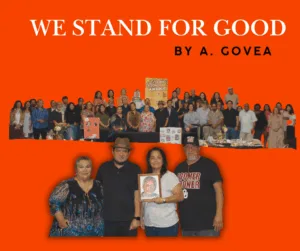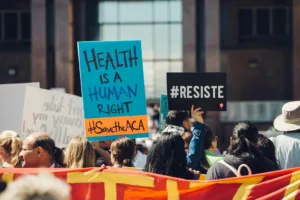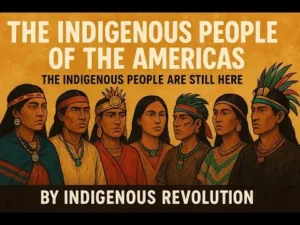By Fernando Florez
September 28, 2024
After that census cycle we joined forces with the United Hispanic Council of Tarrant County, a Hispanic civil rights organization, which had been involved in FWISD redistricting and other civil rights issues since the early 1970s. That’s where I met and started working with Juan Perez, Sam Garcia, Rufino Mendoza Jr., Juan Rangel and others. That group had the same goals we had—mainly, to fight for more Hispanic representation. And most importantly, another person I met at the United Hispanic Council was Mario Perez. He has been a leader in redistricting, starting around 2005, but mainly helping to coordinate at the grassroots. There are other very important things associated with redistricting that must be done. For me it all starts with a deep dive into research to eliminate preconceived notions some people have (baseless opinions). We need accurate data to come up with an accurate research-driven strategic plan. That includes the history of voter turnouts in precincts in previous elections, etc. and that’s very time consuming. Next comes drawing the actual map to submit to the city or several of them. Mario worked on redistricting before he graduated college in 1998 (UTA) and certainly before he attended law school. There is no doubt that he has been a major contributor to our city council redistricting success.

He helped us during the 2010 census cycle, a time when the city had redistricting software online for citizens to draw maps and submit to them. Before submitting the maps, we spend many hours analyzing and adjusting them. During that census cycle, we took out another chunk of precincts west of 8th Avenue, around TCU, out of district 9. But that, too, wasn’t enough to create a strong Hispanic district.
That’s when we noticed a new trend developing: Although the Hispanic population citywide was increasing, Hispanics were more spread out throughout it in other council districts, but not in a way that would allow us to carve out a new Hispanic majority district anywhere under the Voting Rights Act of 1965. That’s when we decided that to create a second Hispanic opportunity district, we had to expand the number of single-member city council districts from eight (8) to ten (10).
But the number of city council districts had never been increased before in the city’s history. (Fort Worth was founded in 1849 as an Army outpost to fight the Commanche Indians who were raiding the settlements; it was incorporated in 1873 and chartered by the state in 1924. Nearly 90 years after being chartered Fort Worth still had the same number of city council seats! For us adding two new council districts was the only way we could create a second Hispanic district!
We led the campaign to do just that and at the end were victorious in a city charter amendment election, by the ‘skin of our teeth’—by less than 200 votes! In negotiations prior to the charter amendment election, we agreed that if we won the change would be implemented after the 2020 census cycle, in the city council election of May 6, 2023.
Because of the influence politicians have during redistricting when they draw their own maps —usually for their own benefit—some of us had been thinking that the best way to go on that issue was to create a “citizens independent redistricting commission” to draw the city’s map. I proposed that idea at the public hearings conducted by the Race and Culture Task Force, which started around 2016 throughout the city. Luckily it was one of the recommendations accepted and made by that group to the city council. On the day the recommendations were discussed at a city council work session, I met Bruce Miller, a retired TCU astrophysics professor, who played a key role in our campaign to create a Citizens Independent Redistricting Commission (IRC) to draw the city’s redistricting map after the 2020 U.S. Census. Shortly after that we also met Byrwec Ellison, Jackie Cox, Kat Kroll and others who had the same idea about creating an IRC. We made presentations promoting an IRC at a League of Neighborhoods meeting, at my own neighborhood association, South Hemphill Heights, and at other community meetings. Our presentations carefully detailed the advantages of an IRC, particularly because it would result in a more fair, diverse, equitable and inclusive city council. The IRC we were proposing was modeled after Austin’s IRC where that happened. The idea of a Fort Worth IRC was well received and supported everywhere we made presentations before we took it to the city council for consideration. But creating an IRC would require another charter amendment election and, unfortunately, the conservative Fort Worth city council was not interested in doing that. But trying to create the IRC was not a total waste of time as we aired some key concepts that were later incorporated into 2020 census cycle redistricting. Because of the addition of two new districts, amid speculation in the media about where to start drawing the city’s map, we knew where our map drawing would start: anchored in the city’s southside, which included Worth Heights, Rosemont, JMSL, South Hemphill Heights etc., neighborhoods mainly comprised of working-class people, with Democratic party affiliated precincts and the maximum number of Hispanics in them. As soon as the city’s online mapping software became available, we planned to start drawing maps.
It became available in late November of 2022, and we had our first meeting at a restaurant on a Sunday to start map drawing. At that meeting was Mario Perez, Carlos Flores, Byrwec Ellison and me. I had previously worked with Byrwec during our campaign to create the Independent Redistricting Commission (IRC) and knew he was a whiz at handling software, and he turned out to be a key contributor to our effort in 2023. (That was a good thing because at that time I was more than half blind and had trouble seeing a computer screen.)
As it turned out, a few days later, Pablo Calderon came on board and he, too, was a whiz at handling the redistricting software. We moved the existing City Council District 9 in a westerly direction and started carving out a Hispanic majority district. We knew that we also needed to add territory to it from east of I35W (the freeway).
We wanted slightly more than a 70% Hispanic population and the right precincts in the district we were trying to create. (This is where knowledge of how precincts perform in elections gives you an advantage. Of course, precincts have to connect with each other in maps.)
For several days it was intense on the telephone manipulating the software, mainly by Byrwec and Pablo as we made suggestions to them. At the end, I submitted two maps and Pablo one to the city. Over 20 maps were submitted by people to the city, and they went to a city council appointed Redistricting Committee for evaluation. We felt good about our chances with the maps we submitted and that we could go to court and defend them if necessary. As it turned out, most of the maps were eliminated in the first round over several public hearings held by the Redistricting Committee for not complying with the Federal Voting Rights Act. Pablo’s map received the most points followed by ours. All of this was done transparently at the city council where speakers and others could participate in person or via Zoom by telephone. Yes, we lobbied extensible members of the Redistricting Committee and always had the most people speaking in support of our maps. But there was opposition to our maps: A member of the Redistricting Committee, a lady, Ì think, from the east side, made it clear that she was against creating a second Hispanic majority district and there was one Hispanic highly populated neighborhood which opposed our plan. They brought many people with them to the city council and wanted to remain with their same city council representative in her new district 9, but we had so many people supporting our maps that I don’t think the Redistricting Committee seriously considered their proposal. This happened toward the end of many public hearings. By that time Sal Espino had already replaced the previous Chair of the Redistricting Committee as chair. My opinion is that Sal really understood what we were trying to accomplish with our maps, and he helped us. (I am not going into too many details here about the back and forth within the redistricting committee that occurred.)
After numerous discussions over several days, it was down to one map, a combination of Pablo’s map, ours, plus other precincts east of the freeway.
The Redistricting Committee, the Mayor, Mattie Parker, and the city council members were tired and wanted to finish 2020 Census Cycle redistricting. So, they voted the final map in. Other people who helped us with 2020 redistricting are Ramon Romero, Joe Govea and others. I also want to commend Fernando Costa and city staff for the excellent job they did throughout the redistricting process. I am extremely happy and thankful about the results. My only regret is that my wife, Roberta, and people such as Pauline Valenciano, are no longer with us to celebrate this great victory!
——-‐——–Fernando Florez, is a community leader who has received many awards over the years, including being named Fort Worth MAN OF THE YEAR for his community work in 1996 by the Fort Worth Star-Telegram. He holds BBA and MBA degrees from Texas Christian University (TCU). He may be contacted at (817) 239–0578 or rfflorez@ juno.com





